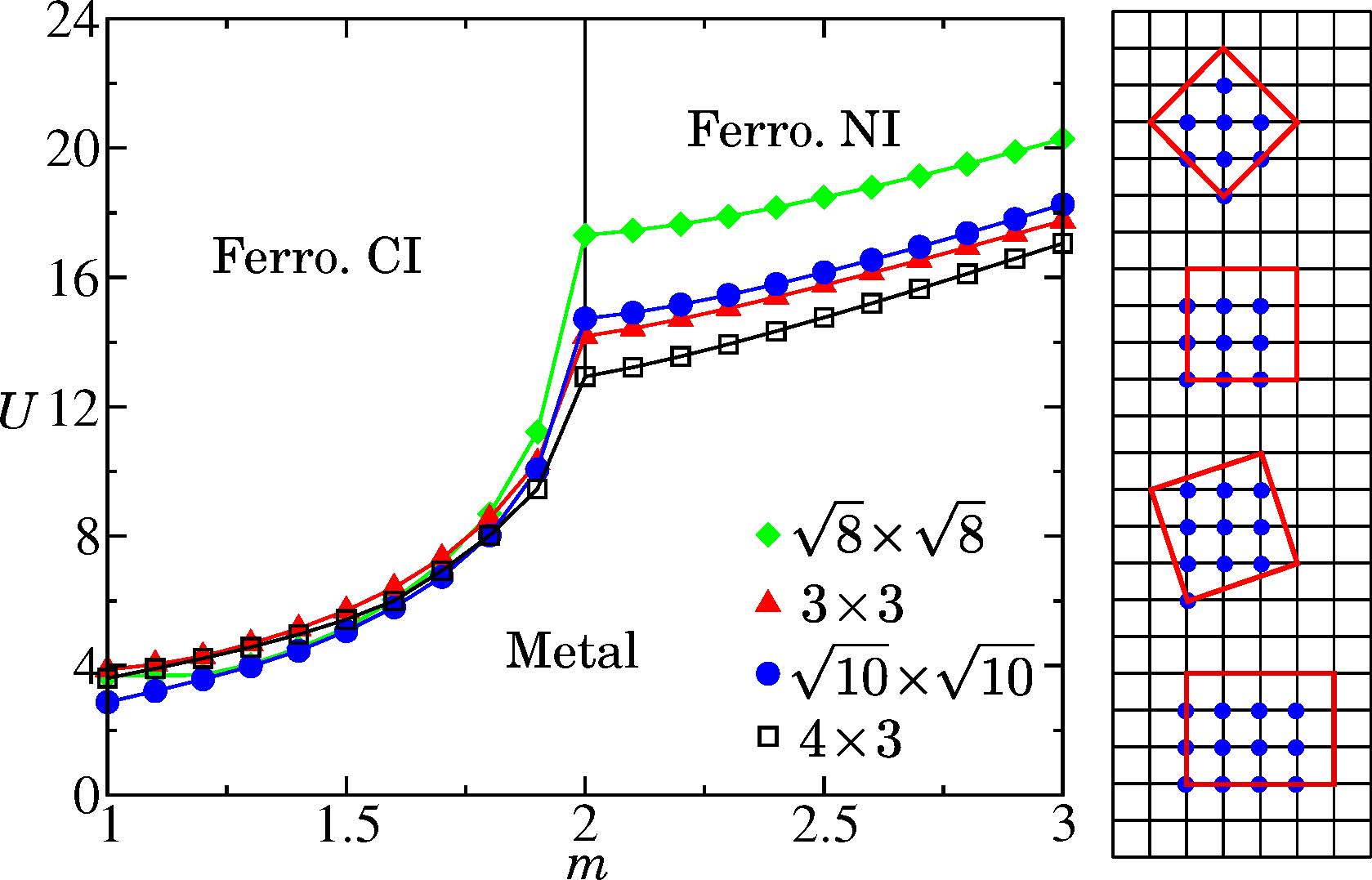News
- Home
- News

Bands from non-trivial topology are believed to emerge strictly at 1/2-filling and exhibit either the quantum anomalous Hall or spin Hall effects. However, correlation effects usually bring surprises. By means of exact diagonalizations, Dr. Yu-Chin Tzeng and his colleagues explore the behavior of the Bernevig-Hughes-Zhang (BHZ) model at 1/4-filling under the on-site Hubbard interaction. Without interaction, the system is in a metallic state at 1/4-filling. Still, by introducing the interaction, it may transition to either a topological ferromagnetic Chern insulator or a non-topological ferromagnetic normal insulator. At the same time, another research group from the USA uses a different approach and obtains the same result: Under strong Hubbard interaction, the system at 1/4-filling undergoes a topological Mott transition into the topological phase. These two studies collectively demonstrate the phenomenon of topological phase transitions in the BHZ model under strong interaction conditions, confirming the consistency of different theoretical approaches in explaining and predicting these phenomena. These studies provide new theoretical foundations and experimental directions for understanding and manipulating the topological properties of quantum materials.
一般來說,非平凡拓撲的能帶來自嚴格的 1/2 電子填充,並表現出量子異常霍爾效應或自旋霍爾效應。然而,強關聯效應通常會帶來驚喜。透過精確對角化,曾郁欽博士和他的同事探索了 Bernevig-Hughes-Zhang (BHZ) 模型在電子-電子相互作用下,1/4 填充時的行為。在沒有相互作用的情況下,系統在 1/4 填充時處於金屬狀態,透過引入相互作用,它可以轉變為拓撲鐵磁陳絕緣體或非拓撲鐵磁正常絕緣體。同時,另一個來自美國的研究小組採用了不同的方法,得到了相同的結果:在相互作用下,1/4 填充的系統發生拓撲莫特轉變,進入拓撲相。這兩項研究共同證明了 BHZ 模型在相互作用條件下的拓樸相變現象,證實了不同理論方法在解釋和預測這些現象時的一致性。這些研究為理解和操縱量子材料的拓樸性質提供了新的理論基礎和實驗方向。